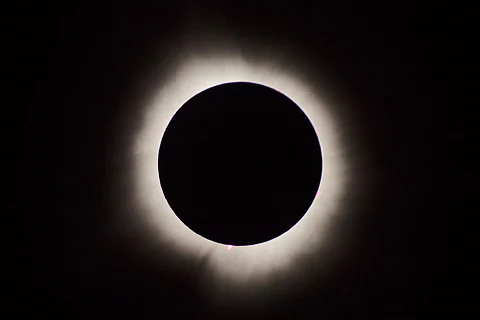
- Destinations
- Experiences
- Stay
- What's new
- Celebrating People
- Responsible Tourism
- CampaignsCampaigns
- Subscribe
- Buy Now

Earlier this month, social media buzzed with claims of a total solar eclipse set to darken skies on August 2, 2025. The excitement was short-lived, however, as NASA has now debunked the rumour, clarifying that no such eclipse will occur on that date. The next total solar eclipse visible from Earth is actually slated for August 2, 2027. While the viral posts may have caused confusion, they’ve also sparked renewed interest in celestial events. If you’re eager to witness the awe-inspiring phenomenon, it’s time to plan ahead. Here’s everything you need to know about where—and how—to catch the 2027 eclipse live.
In two years from now on August 2, 2027, the skies over parts of Europe, North Africa and the Middle East are set to host a celestial show: a total solar eclipse of unusual duration. With the totality extending up to a remarkable six minutes and 23 seconds, it promises to be one of the most significant celestial occurrences of the century.
This extended period of darkness will allow for rare observation and a truly immersive experience for those fortunate to be in its path. Most total eclipses offer only a brief glimpse of the sun’s corona, often for less than three minutes. However, according to reports, the upcoming eclipse breaks this norm, making it the longest total solar eclipse visible from land between 1991 and 2114.
Here’s what you need to know about this spectacular astronomical event.
Solar eclipses occur when the Sun, the Moon and Earth line up, either fully or partially. The phenomenon happens when the Moon passes between the Sun and Earth, casting a shadow on Earth that either fully or partially blocks the Sun’s light in some areas.
A total solar eclipse happens when the Moon passes between the Sun and Earth, completely blocking the face of the Sun. People located in the centre of the Moon’s shadow will experience a total eclipse when it hits the Earth. The sky will darken, as if it were dawn or dusk. Weather permitting, people in the path of a total solar eclipse can see the Sun’s corona, the outer atmosphere, which is otherwise usually obscured by the bright face of the Sun.
On August 2, 2027, Earth will be near aphelion, its farthest point from the Sun. This makes the Sun appear slightly smaller in our sky. Simultaneously, the Moon will be near perigee, its closest point to Earth, making it appear larger. The combination of a seemingly smaller Sun and a larger Moon results in a more extended period.
Adding to this rare alignment, the eclipse’s path will pass close to the equator. This is crucial because the Moon’s shadow travels more slowly over the Earth’s surface at lower latitudes. This reduced speed translates directly into a longer time spent under the Moon’s complete shadow, amplifying the duration of totality, which on August 2 will total six minutes and 23 seconds.
The August 2, 2027, eclipse’s journey will commence over the Atlantic Ocean, casting its approximately 258-kilometre-wide shadow eastward. The path of totality will stretch across parts of 12 countries:
Southern Spain (including Cádiz and Tarifa)
Gibraltar
Morocco
Algeria
Tunisia
Libya
Egypt – Luxor will enjoy the longest totality at 6 minutes and 23 seconds
Sudan
Saudi Arabia
Yemen
Oman
Somalia
Outside this path, many regions—including most of Europe, North Africa and western Asia—will experience a partial eclipse.
Parts of India will catch only a partial eclipse. The western and northwestern states—Rajasthan, Gujarat, Maharashtra and Goa—will witness the Sun partially obscured between 10 to 30 per cent.
In India, the eclipse will likely occur between 4 PM and 6 PM local time. In some areas, particularly coastal cities like Mumbai and Goa, sunset may limit visibility.
(With inputs from multiple news reports)
